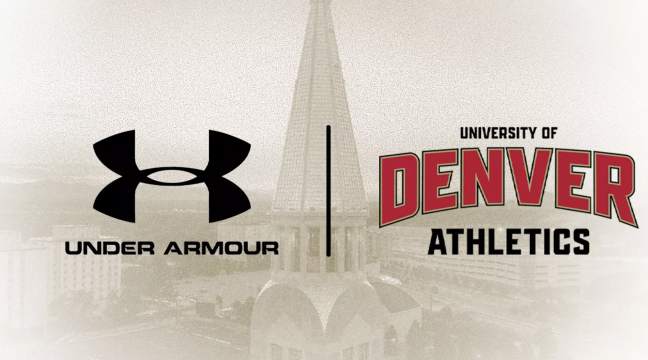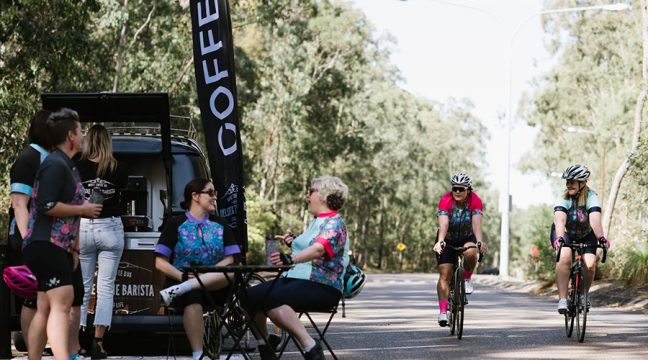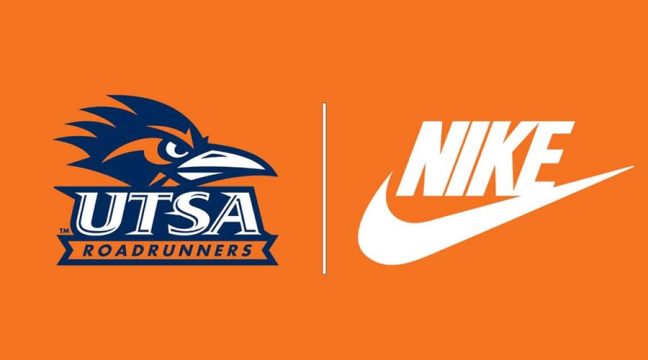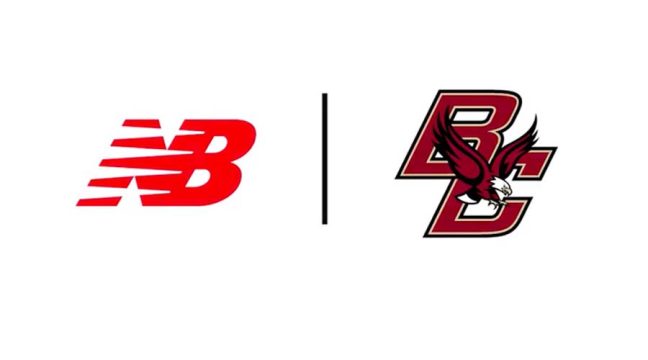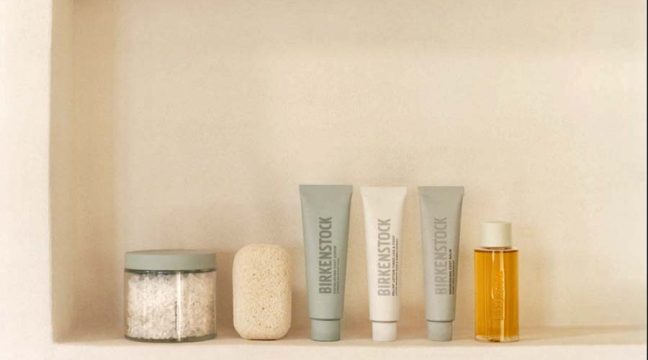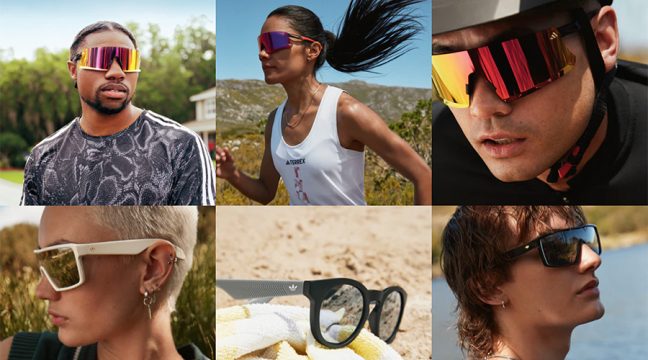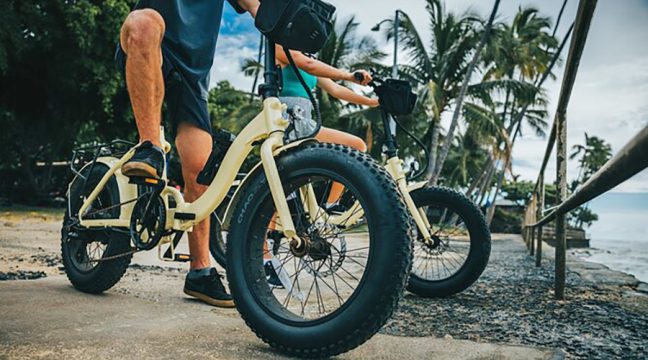As with so many growing categories, trail running shoes have gone through drastic evolutions since they became a major player in the industry back in the 1990s. We’ve seen them adapt from basically pared-down hiking shoes with bulky toe bumpers and stiff outsoles to a sort of running slipper with only a thin layer of foam underfoot – some with separated toes – to the most recent iterations being a hybrid of all of the above.
The trail running shoes of today, along with next season’s promising models, seem to have arrived at equilibrium of the often-radical innovations within the category. The contemporary trend that changed the game is the maximum cushioning movement, led by brands like Hoka One One. Many models boast up to 30mm thickness and are made almost entirely of superlight EVA foam.
“The industry as a whole is being driven by cushioning,” said Mike Nesladek, vice president of marketing for Newton Running, a brand that has completely resisted the max temptation in lieu of other innovations. “However, we at Newton are more aligned with a ‘trampoline’ metaphor for our shoe technology. An athlete will be at his or her best while retaining the natural spring in his or her step.”
While maximalism enjoys continued popularity with consumers, retailers and brands alike, the design can be a bit too squishy for many runners, especially those who adapted to the previous trend of minimalist running. Worlds apart, it is almost comical these trends followed one another. The shift speaks to the bombastic nature of the trail running category, and perhaps, the personality of its users.
Minimalist runners prefer more “trail feel” as well as a lower profile and better universal flex. Many also prefer the zero-to-minimal drop profiles the natural running shoe movement brings to the scene. Another selling point is a more biomechanically accurate toebox, which allows for natural toe splay.
Golden Harper, founder of Altra, sees benefits in both. “It seems many are striving for balance in shoes right now – getting the shoe to balance front-to-back makes it more stable and agile. A lot of the best shoes are finding balance between the responsiveness and lightweight of minimalism and the squishiness of the max cushioned trend,” said Harper. “Balancing cushion and responsiveness gives most runners the best chance for success. While both ends of the spectrum have their applications and types of runners they work for, too much of either tends to cause problems for the average runner.”
At the same time, average heel-to-toe drop has come down from earlier days when most shoes had a visible tilt. And while brands like Newton, Altra and Treksta have long championed the wider toe box, other brands seem to at least be widening this part of the shoe, if not changing the shape entirely.
We’ve put together a list of key upcoming models, some on shelves now but with carry over into 2016, that best represent the progression of min/max trends in the category.
And since trail running offers athletes such a vast array of terrain, from simple dirt roads to alpine ascents, we’ve asked brands to share some of their favorite trails on which these models excel. Often these are the same trails by which the models were inspired, tested or where sponsored elites rack their miles.
Altra
Altra running remains completely committed to the zero-drop design and their trademark FootShape extra-wide toebox. They’ve been incorporating max cushioning for a few years now, in select models. The multi-purpose Paradigm 1.5, $100, zero-drop 34mm, M9 9.7oz., W7 8oz., just launched last month. Though not originally designed as a trail-specific shoe, the first iteration quickly gained favor with many of Altra’s sponsored athletes, like Jason Schlarb, who uses the Paradigm for his 100-mile-and-more races on nasty terrain.
The whopping 34mm of EVA is plush, flexible, and lightweight. The outsole swallows rocks – no need for a plate here – and the lugs provide just enough grip in most conditions. But they also bounce off pavement and hardpack with a cloudlike feel. Not all runners will be comfortable with this level of cushion, however, and many will also need to adjust to the zero-drop profile. This is not an ideal shoe for traditional heel-strikers or those looking to feel the trail underfoot. Also the wide toe means some lateral movement on uneven descents, unless laced extra tight.
A more typical trail shoe, the Altra Lone Peak 2.5, $120, zero-drop, 26mm, M9 10.6oz., W7 8.5oz., has been redesigned and will launch this summer. With a lower profile and more aggressive tread than the Paradigm 1.5, this shoe is more reminiscent of traditional trailrunners, but the ride is definitely softer and more forgiving. Plus, unlike some max shoes, this one feels stable underfoot in part to the wide outsole platform – and the zero-drop design seems less prone to ankle twists. A rockplate protects underfoot and a wide synthetic toe reinforcement adds some protection along with the small bumper. The upper mesh is quite breathable, but again there’s only minimal lateral support in the toebox. If the gusseted tongue isn’t enough for your rocky runs, there’s a built-in gaiter attachment on the heel.
Altra’s Lone Peak Neoshell, $150, zero-drop, 26mm, M9 11.5oz., W7 9.2oz., offers the same features, but boasts Polartec’s Neoshell weatherproof fabric upper, which they call “better than waterproof.” While typical waterproof barriers are inside the outer shell of the upper, allowing that outer section to still get wet and heavy, this one blocks moisture from ever adhering to the upper at all.
Ideal Trail
“The Lone Peak shoe was designed for, well, Lone Peak. The trail up the mountain offers the most vertical gain of any peak in the Wasatch, with the trailhead at about 4,500 feet and the summit at close to 11,300 feet for a vertical gain total of 7,000 feet in just six miles. You start in the desert landscape, climb up the insanely steep Jacob’s ladder, grasping at shrubs, and finally into pines as you get higher. Soon you are in an area covered with white granite rock that looks like something from a different planet before you are surrounded by the massive 1,500’ Lone Peak cirque you must go around to get to the summit – a slab of rock with 1,000’ drop-offs on three sides. You get to experience just about every kind of trail condition from smooth dirt, to gravel, to alpine meadows, pure rock and granite scrambling,” said Golden Harper, founder and product development, Altra Running.
Asics
Asics will release two new trail shoes in January 2016, one more traditional and one with a more minimal feel. The Gel-FujiEndurance, $180, 8mm drop, 18-10mm, M9 11.9oz., W7 9.9oz., is the beefier shoe designed for heel and midfoot strikers who tackle gnarly trails and sloppy conditions. It features a new, patented technology called PlasmaGuard – Asics said you can literally dip this shoe in mud and the upper will come out clean. Well-spaced but tough lugs and a rock plate should handle the intended terrain well, and the brand’s gel padding in the heel always provides a durable, well-padded landing. Plus a too-often-omitted lace garage keeps them tucked away.
For a lighter and more responsive option, the GEL-FujiLyte, $110, 4mm drop, 14-10mm, M9 8 oz., W7 6.5oz., replaces the popular FujiRacer as a race-ready, speed-oriented trail shoe. Showing the continued strength of the shallow-drop trend, this is Asics’ first 4mm-drop trail shoe, a 2.5mm reduction from the Racer, and comes down considerably in stack height at toe and heel. It should be even more flexible with the shorter height, but still has a rockplate for forefoot protection and a slight toe bumper. The mesh and a perforated insole should also help with breathability and drainage. And again, there’s a lace garage.
Even speedsters like Ryan and Sarah Hall enjoy the peacefulness and softer surfaces of trail running. One of Sarah’s favorite trails is the dirt road going up to Mt. Entoto in Addis Ababa, Ethiopia. It’s a rocky dirt road, eight miles one way, taking runners from 9,000 ft. up to 10,500 ft. in elevation. “The views of the valley and eucalyptus forests along the way are spectacular,” said Sarah Hall. “You pass several historic churches, and often crowds of people walking in their white church robes. I was invited once to sit and eat injera with some locals, who fed me by hand, and then I continued on my run.”
Ideal Trail
Husband Ryan Hall’s ideal trail is closer to home. He loves to run sections of the legendary Pacific Crest Trail. “I love the trail in many different parts but especially as it goes through Big Bear Lake (where I grew up) and Crystal Cragg, which is near Redding where I now live,” he said. “This section seven and a half miles one way, consisting of small, windy, beautiful, often mountainous single track, but with lots of flat too for speed work…I can get buried in the PCT and run for hours without feeling like I’ve been out for more than minutes. Peaceful. Tranquil. Scenic. And rooted in a deep history, so when I run on it I know I am on the same trail that many hikers before me have traveled an epic journey on.”
Brooks
The new PureGrit 4, $120, 4 mm drop, 19-15mm, M9 10.1oz., W7 8.2oz., is another shoe balancing better trail feel with soft, responsive cushioning. This shoe slips on like a glove and the 3D printed upper is seamless and supple but close fitting all around. The Nav Band – an elastic strap from instep to outsole that hugs over the midfoot – and ergonomic support, completes the package. While definitely low to the ground, the BioMoGo DNA midsole is enough to handle a light heel strike, but excels with a midfoot landing, and the shoe strides naturally and feels quick and agile. There’s a rock plate and lots of tiny hex-shaped lugs, which offer excellent traction in varied conditions. However, these shoes may feel a bit squirrely on paved or very hardpacked surfaces.
For those who prefer a more traditional design, with near max cushioning, the Cascadia 11, $120, 10mm drop, 27-17mm, M9 11.8oz., M W7 10.1oz., will release in January 2016 and delivers a well-cushioned, well-protected and balanced ride for serious off-road training. Trail-specific technologies add a layer of protection to your run, including a four-point pivot system, at the outside edge of the metatarsals and heel, which they say acts like a suspension system on tricky terrain. Add to that a burly thermoplastic forefoot rock plate. A tough mesh and synthetic upper offers lots of lateral reinforcement, while a high layer of water resistant material keeps water out but remains sufficiently breathable. This shoe could easily double as a speed-hiker.
Ideal Trail
“We tested the models in a variety of locations, but two of the main areas were the Fells Reservation about a half hour outside Boston – over 2,500 acres and over 100 miles of trails; we did routes with up to 2,000 feet of vertical change – and the White Mountains in New Hampshire,” said Brooks Senior Product Manager Brendan Murray. “These two locations are incredibly technical trails that provided an excellent proving ground for testing the prototypes. We always want to find locations that offer, in a sense, the worst-case scenarios of rocky, slick, roots and single-track terrain, so if it passes we know it will be great on mild fire roads or groomed paths that make up many trails around the world. It is one of the nice benefits of testing in New England, as the trails here are known for being so technical.”
Hoka One One
Borrowing some basic design from its speedy and popular max-cushioned road cousin, the Clifton, the 2016 Challenger ATR 2, $130, 5mm drop, 28-23mm, M9 8.6oz., W7 8.6oz., features a more aggressive tread and more supportive upper for trail use. Hoka said they’ve updated the latest version with a more supportive fit through the midfoot, while also increasing comfort across the top of the foot. It’s still amazingly light for the size of the overall package, and offers one of the plushest rides available, thanks to the pillowy but ultralight full-EVA midsole. The Meta-Rocker midsole geometry offers a smooth ride and natural transition from mid to forefoot, but is not too severe to handle heel striking. Runners new to the brand, or max cushioning in general, may feel a bit unstable in these high-profile shoes.
Another shoe based on a previous model is the new Speedgoat, $130, 5mm drop, 31-26mm, M9 9.7oz., W7 8.6oz. Inspired by ultrarunning legend Karl Meltzer and the popular Rapa Nui shoe, the Speedgoat was built to tackle highly technical terrain. The no-sew upper is designed to provide smooth support through the forefoot, and a ground-rubber toecap provides increased toe protection. Hoka sourced the traction experts at Vibram for the sticky rubber outsole with 4mm lugs. Running down both sides from toe to midfoot are trail-specific outsole flex grooves, which provide grip and stability, even when landing on uneven trails. These traits, however, make the shoe not as road or hardpack-friendly.
 Ideal Trail
Ideal Trail
A shoe inspired by multiple Western States 100 winner Karl Meltzler has to excel on that rugged, mountainous and brutal trail. Hoka One One athlete Mike Wardian said the unpredictable and technical terrain, which runs through California’s Sierra Nevada Mountains, requires a shoe tough enough to stand up to unrelenting climbs and blistering descents of the famously unrelenting course. The trail runs just over 100 miles from Squaw Valley to Auburn, CA, climbing over 18,000 feet and descending almost 23,000 feet along the way. Much of this is remote, rocky, loose single track. It’s also notorious for its hot and dry conditions in the summers.
La Sportiva
With a lightweight mesh upper, overwrapping tongue/closure, aggressive mid- and outsole and old-school drop profile, The Mutant, $130, 10mm drop 26-16mm, M9 11.3oz., W7 9.5oz., which recently hit shelves, might be the quintessential hybrid between new and old. The upper is entirely made from four-way stretch mesh, with minimalist anchor laces (reinforced with plastic) attached to the outsole for lateral support. And it’s all one piece, with the tongue as a continuation of the upper and a clever lace garage. It hugs every contour, almost like the minimalist “barefoot” shoes of a few years back. But the bottom is all business, with huge sticky lugs over firm, durable injection-molded EVA and a TPU stabilizer underfoot.
 Ideal Trail
Ideal Trail
“The Mutant was tested on Aspen’s Four Pass Loop,” said Cory Lowe, who handles PR for La Sportiva. The 28-miler crosses four 12,000 foot passes – hence the name – for a total of over 10,000 feet each of climbing and descent. “The loop can be run in a day or explored at a more leisurely pace over multiple days. The Mutant provides ample protection for long miles and good traction for the off camber and loose sections of the trail above treeline. The burly lugs handle muddy stream crossings and the shoe excelled in all the conditions the trail has to offer.”
Newton
This once diminutive startup from Boulder has always done things a little differently. Their new Boco Sol, $130, 3mm drop, 9.6 oz., is another example of the innovation that has put them on the map. Again striking a balance between old and new, the shallow drop still allows for a traditional heel or midfoot strike, but with a relatively low stack height and short drop. They also keep the foot flat and low to the ground, allowing excellent trail feel – although as with all Newton shoes, runners new to the brand will need a few outings to get used to their pronounced Action/Reaction system – suspended lugs under the ball of the foot that depress and recoil during gait.
The outsole is rugged but stealthy, covered with lots of multidirectional nubs for great grip even when wet. The shoe also features a large toe bumper. They’re highly breathable even with a DWR coating on the upper. A gusseted tongue keeps out debris and stays in place. There’s a green story here too: the laces, upper mesh, outsole and box are all 100-percent recycled. The shoe also comes in an all-weather model, the Boco AT, $130, 3mm drop, 9.6 oz., which sports a closed-mesh upper with DWR and added synthetic mesh for improved water and debris resistance.
 Ideal Trail
Ideal Trail
Professional long-course triathlete Rachel Joyce adds some off-road adventure to her miles by donning her Boco shoes and heading to Boulder’s Switzerland Trail. The 8.5-mile rail trail climbs about 1,600 feet, almost all above 8,000 feet in altitude, heading west from the Boulder foothills toward the Indian Peaks. “The terrain is a little rocky, but I love the gentle gradient, and the vistas on the way up are enough to take my mind off the climb,” Joyce said. She added that she’ll do snowy winter runs in the Boco AT and summer runs in the Boco Sol.
Newton athlete Tyler McCandless prefers to take his Boco Sols to another local favorite. “Betasso Preserve in Boulder is my favorite trail,” McCandless said. “It’s a rare, single track dirt trail in Boulder, at about 6,500 feet, that’s challenging yet completely runnable. The views of downtown Boulder and the Continental Divide are breathtaking and an hour run goes by like it was ten minutes.”
New Balance
An update to the 910 trail shoe, the 910v2, $110, 8mm drop 23.5-15.5mm, M9.5 10.8oz, W7 8.9oz., was launched this summer. This is more of a high-mileage trainer than ultralight racer, and is reminiscent of more classic styles favoring heel-strikers, and offering responsive overall performance for varied terrain. The wide and well-padded midsole offers a stable landing pad, but with plenty of plushness, and New Balance said they updated it with an improved fit and enhanced flexibility in the forefoot. The shoe also boasts an improved rock plate and toe protection plus a gusseted tongue. The knobs on the outsole are low profile and the synthetic and mesh upper is quite breathable and offers solid lateral support.
New Balance also updated its popular 980 with the new Fresh Foam Hierro, $115, 4mm drop 21.5-17.5mm M9.5 11.4oz., W7 8.7oz., launching in Fall 2015. Considerably lighter than the 910v2, this shoe offers a smaller drop and better ground feel with a faster, more agile ride. The full EVA outsole is soft and plush with good flex all around, and the outsole is super grippy with loads of well-designed, multi-directional lugs that angle rearward in the front for push-off traction and forward in the rear for breaking and landing. The multidirectional lugs can make the ride feel a tad squirrely on pavement. Mid and toe-strikers will enjoy the lower drop, but there’s ample padding for heel strikers as well. All will enjoy the breathability of the light, airy upper.
The North Face
Designed for European multi-day stage races like the legendary Ultra Trail du Mont Blanc, the new Ultra Endurance, $125, 8mm drop, 17-9mm, M9 11oz., W7 9oz., is new for Spring 2016. The North Face (TNF) decided to launch the shoe domestically after positive feedback from local pros. Despite its low profile and relative lightweight feel, it’s designed to handle long runs and load-bearing runners. The high drop definitely favors heel-strikers. Landing is soft, thanks to full, single-density EVA outsole, but it’s made for speed, not plushness. There are beefy TPU overlays along the sides for lateral support, and a large toecap. Toe and underfoot rock plates protect the feet while the Vibram outsole offers excellent traction.
TNF is also launching Litewave TR, $100, 6mm drop, 19-13mm, M9 8.1oz., W7 6.3 oz., for 2016 – a multi-purpose runner/light hiker, which is also road-compatible. With multiple cutouts, the outsole should offer good flex throughout and the lugs look small enough to grip without a squirrely feel on hard surfaces. Compression-molded EVA does great withstanding high mileage.
 Ideal Trail
Ideal Trail
La Petite Trotte in Lyon, France, is a high alpine, multi-day trail race starting in Chamonix. The Ultra Endurance shoe was specifically requested by European athletes who are much more likely to participate in multi-day stage races carrying light packs,” said Jessica Hollister, public relations manager, The North Face. “The race circumnavigates Mont Blanc in a 293-kilometer loop with 78,000 feet of gain and another 78,000 feet of descent, in only 182 miles. The route is often technical, requiring ropes, and there’s no aid, other than what can be bought in the few villages racers encounter.”
Hollister’s favorite local spot to take TNF shoes for a drive is the renowned Mesa Trail in Boulder, CO. Running 6.7 miles point-to-point between Boulder and climbing mecca Eldorado Canyon, the trail rolls gently along the foothills, with intermittent smooth and highly technical sections and a few steep climbs and descents. Locals will often run it out and back for a weekend long run, bagging over 3,200 feet of climbing along the way all above 5,000 feet. But don’t be alarmed if someone flies past you like your going backwards – it’s just another ubiquitous Boulder elite out for a trot.
Skechers
This popular lifestyle brand has made huge strides in the running community, especially since landing Boston Marathon winner Meb Keflezighi, and they’re beginning to do the same in trail running. The new Gorun Ultra 2, $90; 4mm drop, 27-23mm; M9 9.3oz., W7 7.3oz., is a max cushioned shoe with super plush ride, neutral outsole and what has become one of the brand’s trademarks, a bargain pricepoint. While not ultralight, it boasts a supportive upper with highly stretchable toe box mesh and substantial arch support plus a gusseted tongue feature and reinforced toe and small bumper. The inside is lined with a mesh that’s breathable but soft, so sockless runners take note.
Sketchers also offers GoRun in an all-weather version, the GoRun Ultra 2 Climate, still only $90; 4mm drop, 27-23mm; M9 10.3 oz., W7 8 oz., which adds a three-layer moisture management upper they say keeps the elements out but still wicks well.
Ideal Trail
“These shoes are fun to wear on the twisty, rooty and rocky Bluff Creek Trails by my house in Oklahoma City,” said Camille Herron, Skechers performance elite athlete. The 3.5-mile loop is located just on the north edge of the city, along the Lake Hefner shoreline, and features tight, wooded turns and some technical sections. “I can hop around the terrain and fly downhill. I share the trails with mountain bike enthusiasts, so I think of my Ultra 2’s as being like their bike tires! I get great traction with them on winter snow and the soft cushioning is nice on longer road runs.”
Treksta
This small brand made a name for itself designing light and fast hikers with their unique NestFit toebox, being one of the first brands to mimic the shape and width of a typical foot around the toe of their shoes. The Sync trail runner was the second running model from the brand and is still going strong. For 2016, they’ll offer the Sync II, $140; 6mm drop; M9 11.2oz., W8 9.6oz., and Sync Boa, $140; 6mm drop; M9 10.5oz., W8 9.3oz., with lighter uppers. They’re relatively low to the ground but still offer some good cushion, with an excellent fit and trail feel thanks to the NestFit shape and 3-D printed upper. The Boa model features a ratchet-dial closure system that can be quickly tightened and micro-adjusted at the turn of a dial, for a snug, well-dispersed closure.
New for 2016 is the Wave series: the Mega Wave, $125, 6mm drop; 24-18mm, a highly cushioned and breathable shoe designed for the long distance trail runner. It features Treksta’s new Hyperfoam dual-density EVA midsole for a plush, cushioned ride and their Speed-Lacing System with lace garage. The new HGL two-part outsole improves traction and stability on varied terrain, while the stitchless upper should help alleviate hot spots and blisters.
The Trail Wave, $120, 6mm drop, is a new lightweight performance trail running shoe for committed runners whose routes may vary, combining good bite on loose trails and a soft, comfortable feel on pavement. Mesh uppers with synthetic leather reinforcement provide added protection while allowing good breathability. Angular notches in the heel midsole promote a rounded flex of the midsole/outsole and smoother roll from heel strike to midfoot.
Ideal Trail
“For the Sync Boa, the Centennial Cone trail near Golden, CO, is the perfect trail. It’s a relatively new singletrack trail and on weekends they rotate runners and cyclists. It’s a magnificent 12-mile rolling loop, mostly up around 8,600 feet, with add-ons that can give you additional miles, up to 16. The scenery is gorgeous throughout, and the trail offers everything including long meadows, rocky grinds, tough climbs, descents, magnificent views – all a perfect fit for this shoe’s quickness, padding and great grip,” attested Peter Downing, PR and marketing, Treksta U.S.A.
Under Armour
For 2016, Under Armour will introduce the Verge Low GTX, $140, 8mm drop, 16-8mm, M9 12.7oz., W7 10.7oz., trail runner, as well as a mid-height version, the Verge Mid GTX, $140, 8mm drop, 16-8mm, M9 13.1oz., W7 11.1oz. This is definitely not for the most weight-conscious runner, but it’s a bomber shoe designed to run through anything. Both versions feature a full GoreTex membrane for weatherproofing, plus a seriously rugged and sticky Michelin outsole and dual-density midsole with ample rearfoot padding. There’s also a TPU shank for added heel support, plus a full rock plate. The Mid version adds a well padded, above-ankle cuff that wraps high around the front of the leg for ankle protection, but stays low in back for added flex.
Ideal Trail
“The Verge was made for those unpredictable Spring Oregon days. It could be sunny and 70 in the morning and then 40 and blowing sideways rain by the afternoon. It’s perfect for cruising up Dog Mountain in the Columbia River Gorge. Climbing 2,800 feet from the Columbia River just 60 minutes east of Portland, the seven-mile main loop – with steep climbs and often rough, technical footing – is a lung and leg burner. It is directly across the river from Mt. Defiance, the highest point in the Gorge. Three route options will get you to the top, but the “Way Of The Samurai” is the shortest and most brutal. From the summit on clear days, you can see Mt. Hood. Mt. Adams and St. Helens,” said Steve Metcalf, director of marketing, Outdoor Performance.
Vasque
Vasque introduced the Pendulum II, $120; 6mm drop, 19-13mm; 10.2oz., Spring 2015, which will carry over for 2016. This lightweight shoe designed in the style of traditional trail shoes, is between max and minimal. The completely bonded upper helps eliminate issues such as hot spots and blisters, and the midsole is designed to conform to a runner’s foot for a lasting custom fit. The outsole, surprisingly burly for its weight, and TPU rock plate should handle rugged and loose terrain with ease. There’s also a GoreTex version, $150; 19-13mm; 10.9oz., with GoreFlex construction for a natural, conformable fit in a waterproof/breathable all-season shoe.
Ideal Trail
The Vasque team, as well as their parent company Red Wing, often hit the Barn Bluff trails near Red Wing MN, offering bird’s-eye views of the Mighty Mississippi and Sorin’s Bluff in Memorial Park. While not very long, the trails offer some steep inclines, loose rocks and varied terrain for good testing ground. “The 4mm lug height and aggressive lug geometry give excellent traction on these trails, with light overall weight,” said Julie Quinn, Vasque marketing manager. “The GTX version is perfect in the colder, wetter weather – which we have a good part of the year in Minnesota.”















